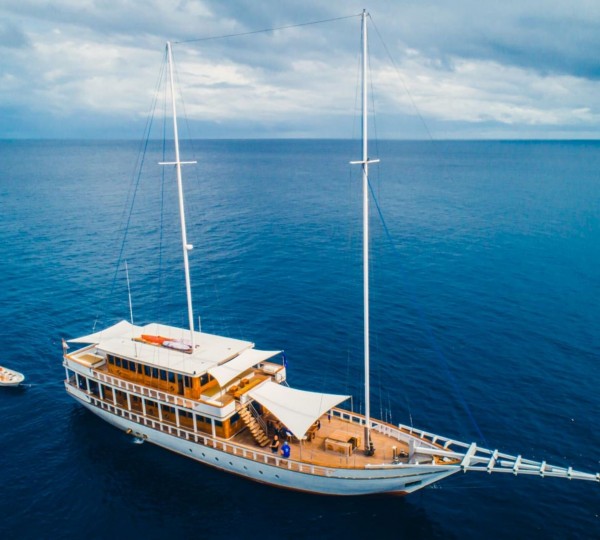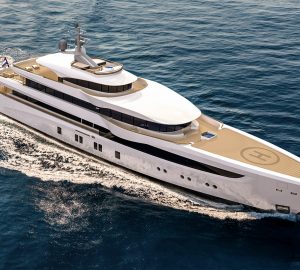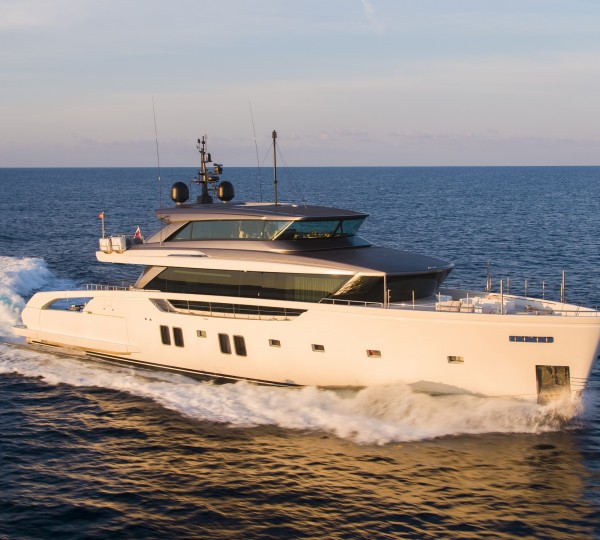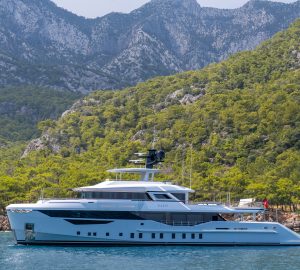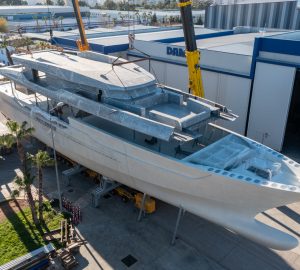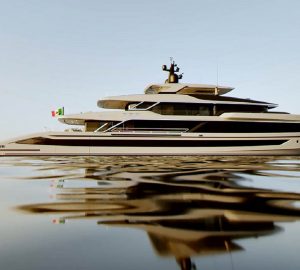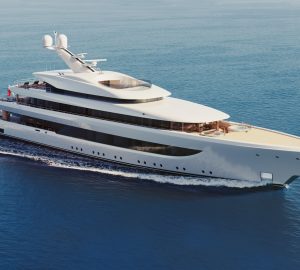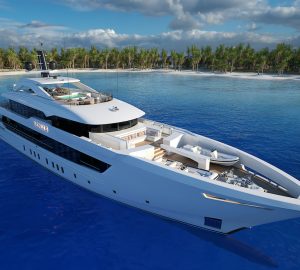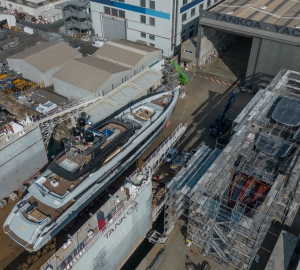How to Purchase a Superyacht for Sale - Luxury Yacht Sales
Becoming a superyacht owner is an exciting milestone that only a lucky few will be able to experience. Before being able to enjoy the pleasure, freedom and adventure of owning your own luxury yacht however, you will have to select a boat that is right for you, and then navigate your way through the correct method of purchasing one of the many types of superyachts for sale. Below is a general guide to buying a superyacht at a time when international luxury yacht sales are becoming more popular. Please note however that this article does not provide, or replace, legal or financial advice.
What type of superyacht shall I purchase?
There are literally thousands of different makes and models of luxury superyachts for sale on the market today. Luxury yacht sales is a vibrant and expanding industry. As an aspiring owner, you may already know which type of yacht you are interested in.
 Luxury yacht sales can generally be divided into 2 main categories, sailing yachts and motor yachts. Within these two parent categories there are several different types of yachts to consider. For example, when choosing one of the motor yachts for sale you may consider purchasing a displacement yacht, planning yacht, open style yacht or expedition / explorer yachts just to name a few. There are also several different types of sailing yachts which include but are not limited to performance sailing yachts, classic sailing yachts, monohull yachts, catamarans etc.
Luxury yacht sales can generally be divided into 2 main categories, sailing yachts and motor yachts. Within these two parent categories there are several different types of yachts to consider. For example, when choosing one of the motor yachts for sale you may consider purchasing a displacement yacht, planning yacht, open style yacht or expedition / explorer yachts just to name a few. There are also several different types of sailing yachts which include but are not limited to performance sailing yachts, classic sailing yachts, monohull yachts, catamarans etc.
Sailing yachts are perfect for those with a desire for adventure and romance. Sailing yachts can have a more natural feel, with the wonderful advantage of peace and quiet when the engines are turned off and can be raced competitively. The feeling of achievement and adventure when sailing cannot be described, only experienced. Motor yachts on the other hand generally provide more space, spanning more decks; they can be faster and built to more individualistic designs. Cruising on a motor yacht can be more comfortable for some as they do not keel over in the wind.
The superyachts for sale that are available in today’s market are limited only by your imagination and are being used not just for relaxation and fun but for business too. Communications and technology onboard these luxury yachts are improving constantly and many are choosing to work from an office onboard their yacht. Many owners also invest in yachts as a platform for entertaining business clients and rewarding top employees by offering them a corporate yacht charter. More and more superyacht owners are also turning to chartering their investment which produces are charter income that can contribute significantly towards running costs.
If you are unsure of the type of luxury yacht for sale that is most suited to your needs, your personal broker will be able to advise you further. If you have had no experience with yachts before, there are plenty of charter yachts you can rent to make sure you are choosing the right one for you before you purchase a yacht that's for sale.
Here is a selection of different types of luxury motor yacht and sailing yacht types to consider
Do I choose a new build or existing superyacht?
New build yachts can take from a few months to a few years to complete, so there may be a while to wait for delivery. You may know of a luxury superyacht builder or luxury yacht designer that you are specifically interested in, or perhaps you have your heart set on the newest most modern must-have superyacht features. It is possible to build a complete custom design from start to finish, or chose a semi-custom model. It is also possible to purchase a superyacht that is in the process of being built, which has come on to the market prior to completion. In this case, it may be possible to enable any mid-build changes you would like. Choosing an existing superyacht on the other hand offers the advantage of being able to use it immediately. When buying an existing superyacht you could also refit the yacht to your own personal style with the latest technological innovations.
Financing a superyacht purchase
Several banks will finance the purchase of either new or existing used superyacht for sale, if required. Terms will vary, although it is common that a proportion of the loan and interest repayments can be delayed until the end of the loan term when it can be paid by refinancing or by using sale proceeds. If choosing this method of financing, lenders may also want a say in which country the superyacht is kept and registered and may also require direct payment of any charter monies to the bank itself.
Luxury Yacht Insurance
As in any major purchase, insuring against accidents is vital when purchasing your own superyacht. It is important to ensure you have the appropriate insurance to spread risk and bring certainty, which can be increased by disclosing any and all information to the underwriter in determining risk and premium. Always consider where the underwriter is based, as some countries are not rigorous in regulating their finances, meaning unforeseen insolvencies can be possible.
.jpg)
How do I buy an existing superyacht for sale?
Memorandum of Agreement (MOA)
When buying an existing superyacht, the best place is to start is with a trusted and experienced broker, an invaluable source of knowledge who can guide you and advise you on both on yachts and the current luxury yacht sales market. Broker’s descriptions are usually without guarantee, similar to those given by real estate agents.
A detailed agreement called a Memorandum of Agreement (MOA) is normally drawn up and signed by each party once a yacht has been selected. 10% of the yacht purchase price is usually paid immediately, with the balance paid once the yacht and the all-important documentation has been formally handed over.
Other key documents include the Bill of Sale and the Protocol of Delivery & Acceptance. The Bill of Sale formally records the transfer of legal title from buyer to seller, and the Protocol of Delivery & Acceptance sets out the exact time and date of the transfer, ensuring that the insurance cover is seamless. Importantly, the MOA must state the superyacht will be transferred completely debt-free.
It is recommended that new superyacht buyers carry out a detailed check of the vessel they are purchasing. This means having the yacht surveyed out of the water, by a qualified and insured surveyor. Following the survey, the yacht should also complete a sea trial. The MOA should describe the parties’ rights and duties when issues are raised during the survey or sea trial, including your right to pull out altogether.
The MOA should also list all the chattels or equipment included in the sale of the yacht. Every item should be recorded, from the safety and navigation equipment, down to the linen and crockery. Yachts can also carry vast quantities of fuel and engine spares, which must be expressly included or excluded.
Further, if the existing yacht for sale is a charter yacht, it may have existing bookings that are usually booked several months in advance. If you are happy to honour the bookings, details of this will need to be outlined, confirming you, not the previous owner will received the charter fee and honour the contract under its existing terms.
Using a standard MOA ensures the most important clauses are covered however additional addendums can be added by each party as the purchase of a superyacht is often unique to the parties and yachts involved.
Payment
Purchasing an existing yacht usually requires 10% of the purchase price to be paid at sale, up front, while the balance is usually paid once the superyacht and all documentation has formally changed hands. For custom and semi-custom built superyachts, an overall amount for yacht construction will have been agreed upon in contract, and the most beneficial option is often to agree for payments to be made following the completion of individual stages to accommodate for delays in material delivery or unexpected interruptions and inflation.
Luxury Yacht Sales - How do I buy a new build superyacht?
The Build Contract?
The purchase of a custom built or semi-custom built new superyacht varies from usual luxury yacht sales or an existing or already completed superyacht purchase.
The build contract is a key document when undertaking a new build. The Shipyard will usually hold a standard set of contractual terms that they will present you, although it is possible to add amendments and incorporate personal requirements.
The build contract outlines not only the total cost of the project agreed prior, but also the instalments in which it may be paid, as well as factoring in fluctuations in materials costs and exchange-rates. The contract will commonly reflect the strict range of regulations that ship builders face in fine detail, outlining the superyacht’s specifications and including where the superyacht will be used, if it will be used for charter, and the flag which it will fly. A guarantee of materials and workmanship for a given warranty period should also be outlined.
If you choose a new build superyacht rather than an existing luxury yacht sale, and you have selected an independent designer, it is important to receive highly detailed blue prints to limit different interpretations from the yacht builder. Further, when building a custom built new yacht, a separate interior designer may be needed, as well as a naval architect and independent technical surveyor. The contracts with these parties should be incorporated into a single build agreement, to ensure all work in harmony together.
Insurance and Security when buying your new build luxury yacht
The superyacht yard where your luxury yacht is being built should be obliged to carry insurance against your yacht being damaged or destroyed during the build. In the event of a claim you should have the option of a refund on payments made to the builder, or for the insurance pay-out to be used to repair the yacht project.
The legal title for the yacht may not be allowed to pass until completion. This gives rise to a slim financial risk, which can be overcome by having an obligation on the builder to repay instalments backed by a bank guarantee, in case the build cannot be completed. Alternatively, you can have legal title to the half-built yacht, but the builder may then ask you for a guarantee against not paying the remaining instalments.
Defaults
The complex build relies on several different contractors, materials and components and it is accepted that there are often delays when building a new superyacht. It is sensible to agree in advance how much delay is acceptable, and much money will be deducted from the instalments should larger delays occur.
Performance and delivery of your superyacht
No two yachts are ever perfectly identical, and as such, their performance in terms of speed, noise levels, vibration and range, are difficult to predict, even with today’s sophisticated computer-aided techniques. It is common to agree a fixed sum as compensation if the performance criteria aren’t met exactly but still fall within certain limits.
Before the exciting all-important delivery of your new superyacht can take place, it is important that all legal documents relating to title are presented prior to the final payment being made. If this important step is not completed, the superyacht cannot be registered and therefore cannot legally sail.
The tax implications relating to the place of delivery must also be agreed upon. This is also the time when the superyacht will be officially tested at a sea trial by an expert representative you appoint to ensure the yachts performance matches its specification.
Warranty of your new superyacht
The new equipment and systems on a new build superyacht will only be used and tested in varying weather conditions over time. Therefore, materials and workmanship are usually guaranteed for a period of warranty following delivery. It’s common to agree for some form of financial security to be provided by the builder, perhaps in the form of a bank guarantee or by the last instalment being withheld until the end of the warranty period.
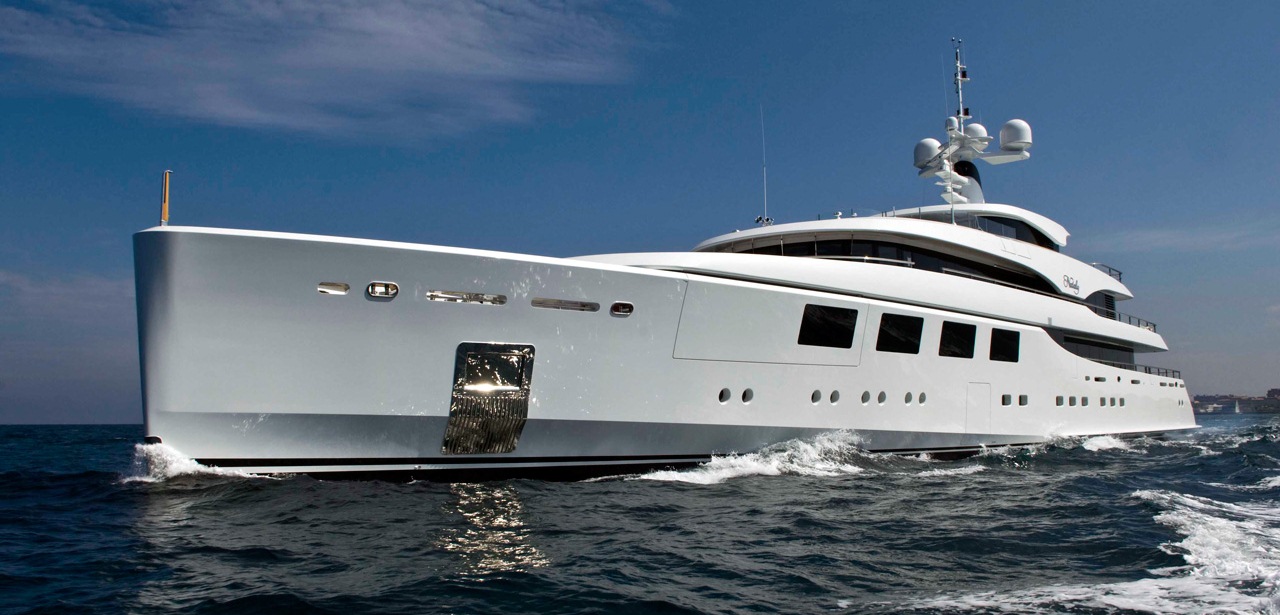
Superyacht Taxes
If you want to keep your yacht in European Union waters, you may have to pay Value Added Tax (‘VAT’). VAT ranges from 15% to 25% of the vessel’s value depending on the country. Generally, VAT is normally payable in the EU country through which the yacht is first brought into the EU. Once VAT has been paid in one EU country, this should theoretically be good enough for all the other tax authorities. Therefore you can bring the vessel into the EU through the country with the lowest rate. If you remove the yacht from the EU for a particular period of time the clock resets and VAT must be paid again. It is vital to keep the correct paperwork onboard your yacht to prove the yachts VAT status. VAT status should be made a term of the sale contract.
There are circumstances in which VAT is not applicable. Namely, yachts built by a certain date, and moored in the EU on a certain date, are not required to pay VAT, as are vessels registered outside the EU, owned by a non-EU resident and only used temporarily in the EU.’ Temporarily’ means for 18 months in any 24 month period. An individual is resident in the EU if they have sent more than 185 days a year there. It is also possible to effectively neutralise the payment of VAT through an offshore structure.
In America, the term ‘Not for sale to US residents while in US waters’ or similar is stated because for a yacht built outside the US to be offered for sale to US residents, while in US waters, an import duty must have been paid. Once the duty has been paid, if the yacht is registered outside the US, the yacht may only be kept in the US, by a US resident, if it’s in the care, custody and control of a licensed yacht broker and not in the owner’s use. He may only use it after he’s paid a 6% use tax. US residents can purchase a foreign-registered yacht that is kept outside the US, on which duty has not been paid, but the yacht must be offered to them entirely outside the US.
Registration of your boat
All vessels must be registered with a country, and fly the appropriate maritime flag, known as an ensign. Most yachts fly the ‘Red Ensign’, which means registering the vessel in the United Kingdom or one of a small group of Commonwealth countries including Bermuda, the British Virgin Islands, the Cayman Islands, Gibraltar, Guernsey, Jersey and the Isle of Man. The Red Ensign reportedly has high safety standards, adding to your vessel’s resale value and prestige.
Beyond the Red Ensign group, other nations such as the Marshall Islands which have adopted many of the same regulations, while working with the United States Coast Guard to make sure US red tape for visiting yachts is minimised.
Insurers and financiers may insist the yacht is registered with certain countries’, to help ensure that the highest regulations are being applied to their liability, and there will be tax implications inherent in any choice.
Superyacht Insurance
As in any major purchase, insuring against accidents is vital when purchasing your own superyacht. It is important to ensure you have the appropriate insurance to spread risk and bring certainty, which can be increased by disclosing any and all information to the underwriter in determining risk and premium. Always consider where the underwriter is based, as some countries are not rigorous in regulating their finances, meaning unforeseen insolvencies can be possible.
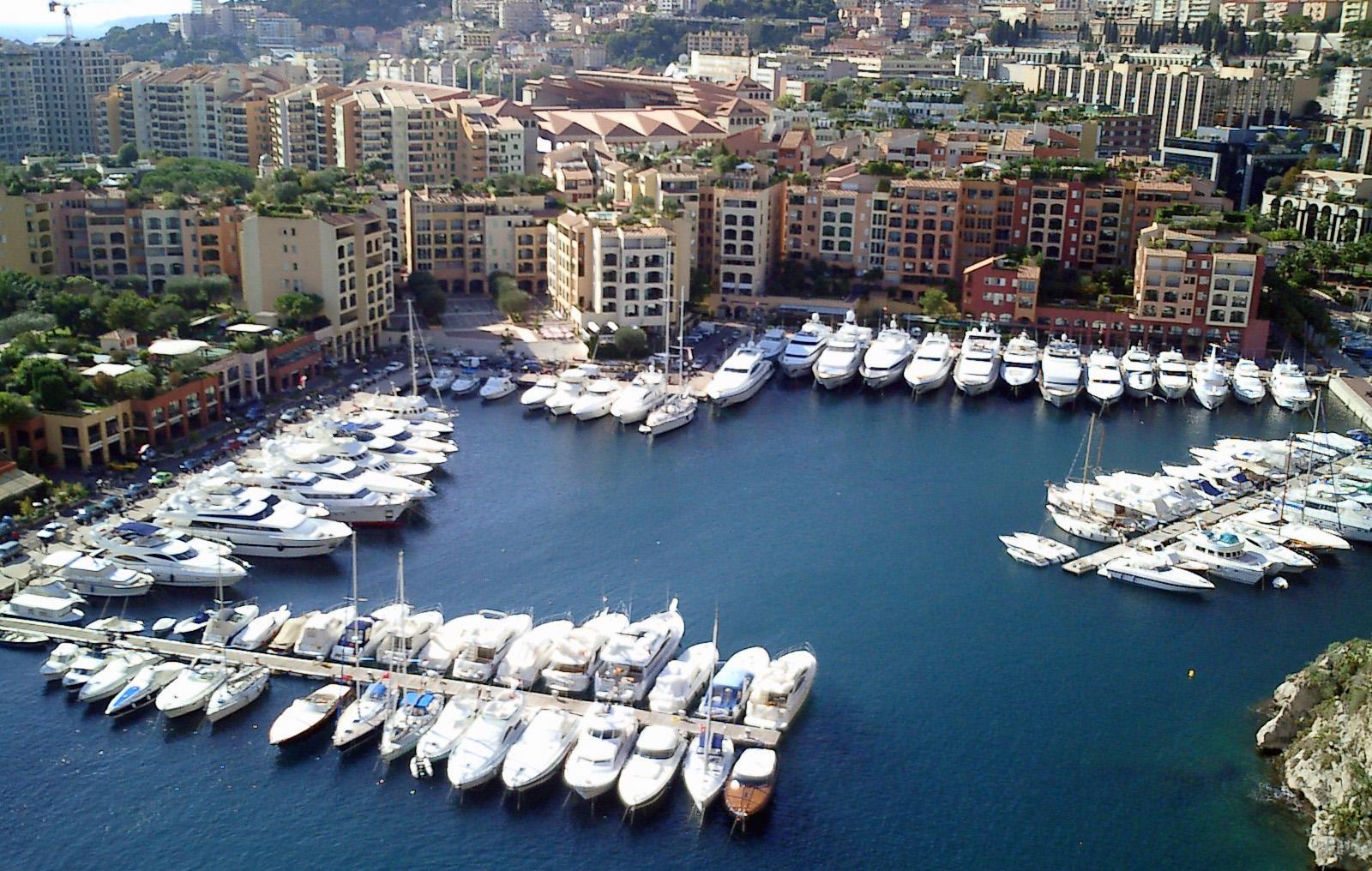 Where do I keep my superyacht?
Where do I keep my superyacht?
Another important aspect of owning a superyacht is where you will keep it once it is yours. No matter where you base your superyacht around the world, prices for where you moor your yacht varies from port to port, but particularly in the more exclusive of Mediterranean harbours.
It is possible to rent or to purchase a superyacht mooring or berth. It is advisable to seek expert advice to check exactly what is being bought, what charges may still be levied by the marina managers, and what the tax implications will be for both you and your vessel.
Where do I get a superyacht crew?
When you purchase an existing superyacht for sale that's large enough to need its own crew it is often practical to employ the existing crew who will have a good knowledge of the vessel and its systems.
An existing luxury yacht crew should be able to make the delivery for you straight away, instead of new crew that would need time to familiarise themselves with the vessel. Some new buyers make the signing of new contracts with the old crew a condition of purchase. You must also ensure that the crew meets the standards of training and medical fitness required by the yacht’s flag state.
If you choose to select a new crew or you have purchased a new build, there are several crew agents who have a selection of experienced superyacht crew on their files who are looking for work on superyachts.

